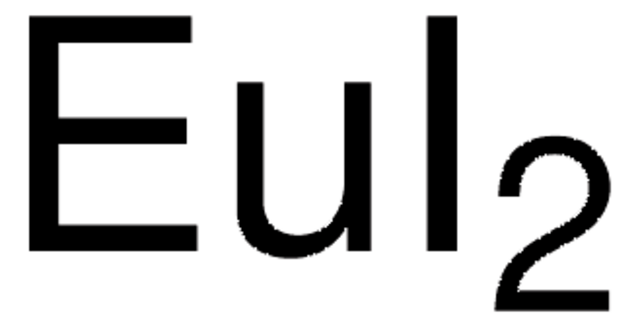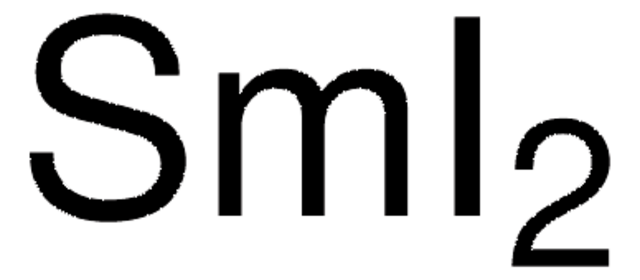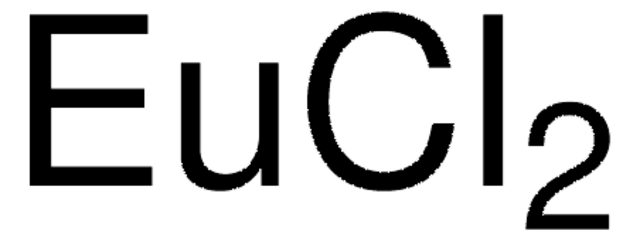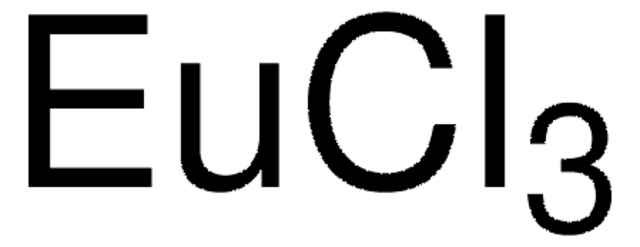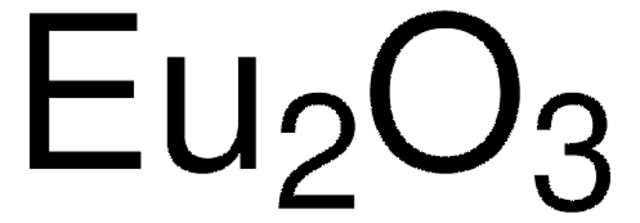474770
Europium(II) iodide
anhydrous, powder, 99.9% trace metals basis
Synonym(s):
Europium diiodide, Europium iodide
About This Item
Recommended Products
grade
anhydrous
Quality Level
assay
99.9% trace metals basis
form
powder
reaction suitability
reagent type: catalyst
core: europium
impurities
≤1500.0 ppm Trace Rare Earth Analysis
SMILES string
I[Eu]I
InChI
1S/Eu.2HI/h;2*1H/q+2;;/p-2
InChI key
DPYXWFUVSMSNNV-UHFFFAOYSA-L
Looking for similar products? Visit Product Comparison Guide
Related Categories
Application
- Reactions of strontium, lanthanum, and europium iodides. Direct preparation of phosphorus triiodide from phosphates: Explores reactions and preparation methods involving europium iodides (Haschke, 1976).
accessory
Storage Class
6.1C - Combustible, acute toxic Cat.3 / toxic compounds or compounds which causing chronic effects
wgk_germany
WGK 3
flash_point_f
Not applicable
flash_point_c
Not applicable
ppe
Eyeshields, Faceshields, Gloves, type P2 (EN 143) respirator cartridges
Certificates of Analysis (COA)
Search for Certificates of Analysis (COA) by entering the products Lot/Batch Number. Lot and Batch Numbers can be found on a product’s label following the words ‘Lot’ or ‘Batch’.
Already Own This Product?
Find documentation for the products that you have recently purchased in the Document Library.
Articles
The rare earth elements impact nearly everyone in the world. All of the people living in advanced technological countries and almost all those living in third world countries utilize the rare earths in their everyday living—the car that one drives (gasoline is refined from oil using rare earth catalysts and catalytic converters reduce the polluting emissions from the automotive exhaust), watching the news on TV (the red and green colors in TV screens), the telephones and computers we use to communicate (the permanent magnets in speakers and disc drives), just to name a few examples.
Our team of scientists has experience in all areas of research including Life Science, Material Science, Chemical Synthesis, Chromatography, Analytical and many others.
Contact Technical Service